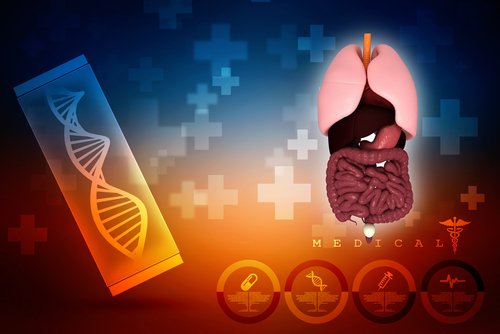Abcertin Clinical Data Supports Use as Alternative Replacement Therapy for Type 1 GD
Written by |

Phase 3 clinical data demonstrated that Abcertin, an investigational formulation of imiglucerase being developed by ISU Abxis, is a safe and effective therapeutic option for the treatment of patients with type 1 Gaucher disease.
Gaucher disease is a genetic disorder that is characterized by low levels of the enzyme glucocerebrosidase (GBA). In the absence of GBA, cells start accumulating waste in structures called lysosomes which at some point become toxic and potentially damaging to the cell.
Standard treatment for patients with Gaucher disease is based on the replacement of the enzyme GBA that is missing — enzyme replacement therapies (ERT) — or the reduction of the product glucocerebroside that results from the abnormal GBA activity — substrate reduction therapy (SRT) — to re-establish the normal waste metabolism.
The U.S. Food and Drug Administration (FDA) in 1994 approved the first engineered GBA medicine, Cerezyme (imiglucerase) developed by Genzyme. Since then, this therapy has become a widely used medicine for the treatment of type 1 Gaucher disease in more than 50 countries.
Two different products based on recombinant GBA have been developed and marketed, the VPRIV (velaglucerase alfa for injection) developed by Shire, and Elelyso (taliglucerase alfa) by Pfizer.
The new formulation of imiglucerase for injection to be used as ERT for type 1 Gaucher disease has now been developed by ISU Abxis.
In a Phase 2 study (NCT02053896), the safety and efficacy of Abcertin, formerly known as ISU302, was evaluated in five South Korean patients who had been previously treated with Cerezyme. The new therapy was shown to have the potential to stabilize the disease with a good safety profile. Results of this study were published in the Journal of Korean Medical Science.
More recently, Abcertin was tested in an open-label Phase 3 study (NCT02770625) that included seven Egyptian patients, ages 2 to 15, with type 1 Gaucher disease who had not received any prior therapy. The patients received a twice-weekly dose of 60 U/kg body weight of Abcertin for up to six months.
After 24 weeks of treatment, the patients showed a significant improvement of 20.6% in hemoglobin levels and of 36% in platelet levels. Indirect comparison of these results with previously reported safety and efficacy data of Cerezyme revealed that Abcertin could improve hemoglobin levels in a similar way as the approved therapy.
The treatment was also seen to significantly reduce the size of the spleen by 47.6% compared to baseline, but no changes in liver size were reported. Significant changes from baseline were also reported in the levels of acid phosphatase (ACP) and CCL-18 levels, two biomarkers of the disease.
Abcertin was found to be safe and well tolerated by patients, with no life-threatening events reported during this study. The most common adverse events reported were infections and gastrointestinal disorders.
“Our Abcertin Phase 3 study demonstrated that Abcertin achieved the clinical endpoints, including improvements in the hemoglobin concentration and other efficacy endpoints,” the researchers stated in the report.
Based on these findings, researchers suggest that Abcertin should be considered as an alternative ERT option for patients with non-neuropathic GD.
The results of the Phase 3 study were reported in an article titled “A multicenter, open-label, phase III study of Abcertin in Gaucher disease,” published in the journal Medicine.


